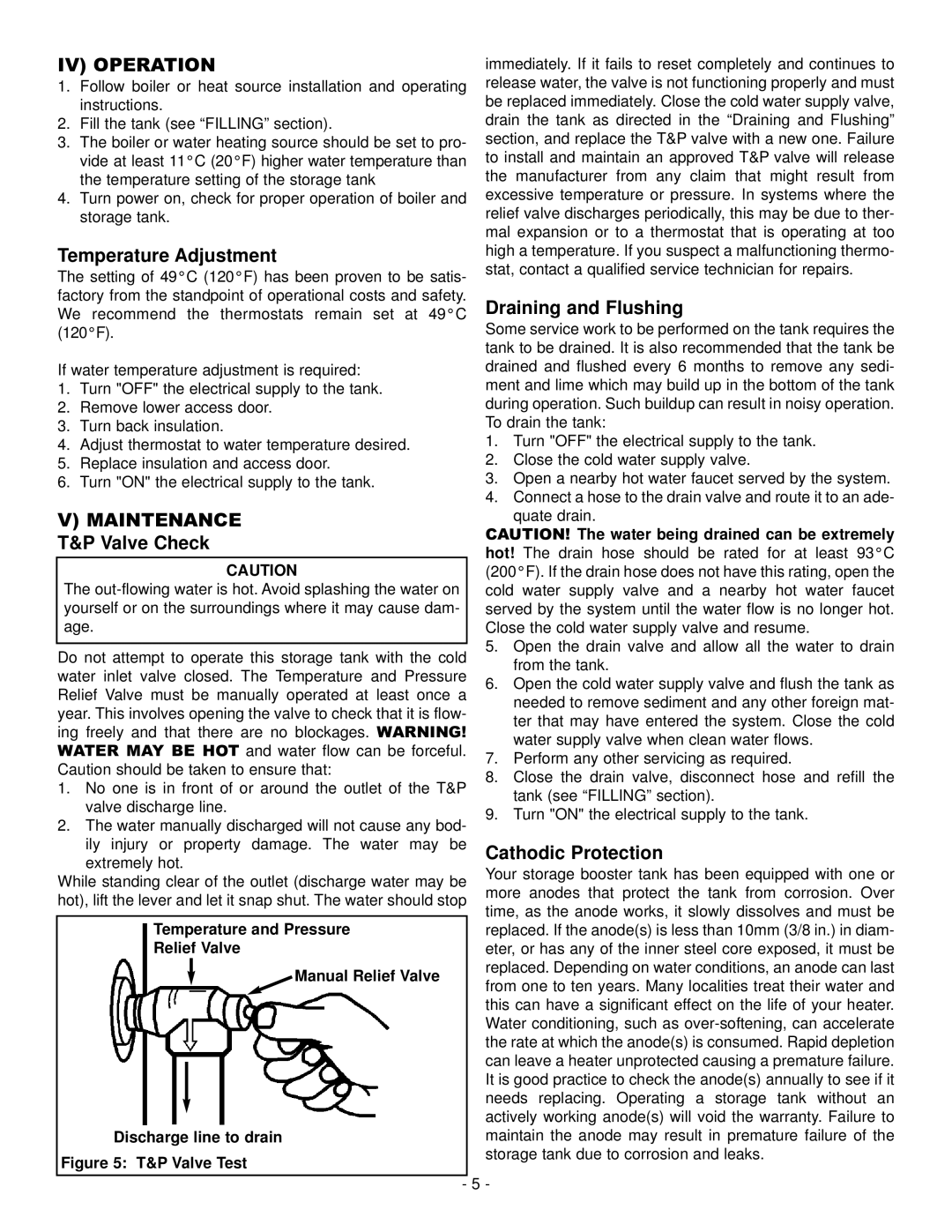WATER HEATING specifications
GSW Water Heating, a trusted name in the water heating industry, has been delivering high-quality products designed for residential and commercial applications. With a strong commitment to innovation, efficiency, and sustainability, GSW Water Heating offers a wide range of water heaters that cater to diverse customer needs.One of the standout features of GSW Water Heating products is their advanced insulation technology. GSW employs high-density foam insulation to reduce heat loss, ensuring that water stays hot longer while minimizing energy consumption. This not only contributes to lower utility bills but also enhances the overall efficiency of the heating system.
GSW water heaters are engineered with energy efficiency in mind. Many models are designed to meet or exceed government standards for energy performance, allowing consumers to benefit from significant savings over the life of the product. The introduction of high-efficiency models, such as those equipped with Energy Star certifications, underscores GSW's dedication to environmental responsibility.
Another defining characteristic of GSW Water Heating is their versatility. Offering a variety of tank sizes and types, including electric, gas, and hybrid systems, GSW ensures that there is a suitable solution for every household or business. Their range includes conventional storage tank water heaters as well as instantaneous and on-demand systems, catering to varying hot water needs.
Durability is a hallmark of GSW Water Heating products. Built with high-quality materials and robust construction, GSW water heaters are designed to withstand the rigors of daily use. The tanks are often constructed with corrosion-resistant linings, further enhancing their longevity and reliability.
Furthermore, GSW incorporates user-friendly controls and monitoring features into their products. The intuitive design allows homeowners to easily adjust temperature settings and monitor performance, ensuring optimal operation and convenience.
Lastly, GSW Water Heating prioritizes customer support and warranty options, providing peace of mind for users. Their commitment to quality extends beyond the initial purchase, ensuring that customers receive reliable service and assistance throughout the product's lifespan.
In summary, GSW Water Heating stands out for its innovative technology, energy-efficient designs, versatile product offerings, and commitment to quality and customer satisfaction. Whether for residential or commercial use, GSW delivers reliable and efficient water heating solutions tailored to modern needs.

